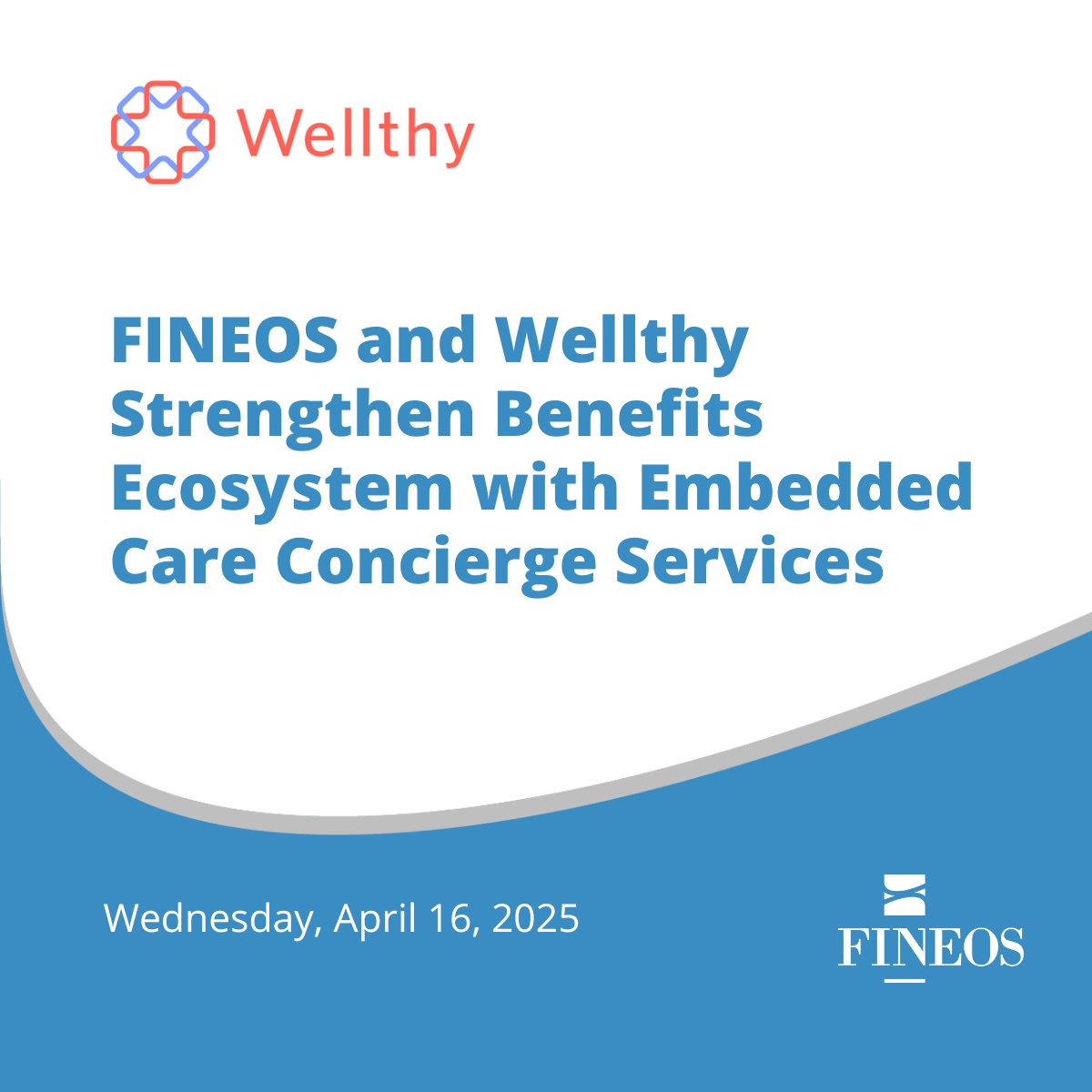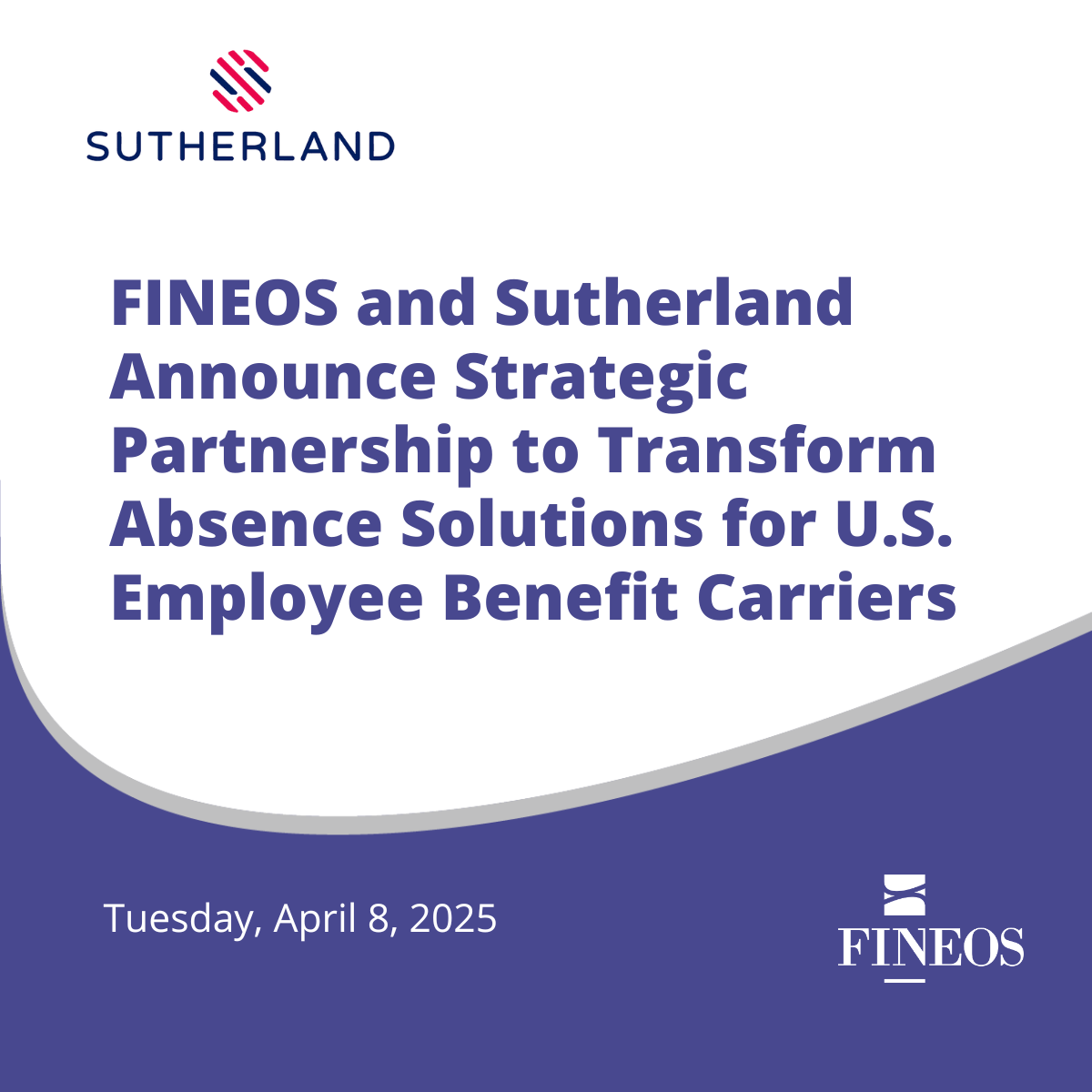Original article appeared in The Irish Advantage March 2021
FINEOS discusses Employee Wellness, Machine Learning, and Cloud Solutions: The big drivers shaping the global insurance industry
Enterprise Ireland supported company, FINEOS, is a leading global provider of core systems for life, accident, and health insurers. FINEOS counts seven of the ten largest group life and health carriers in the United States and six of the largest life insurers in Australia as customers. With employees and offices worldwide, FINEOS continues to scale rapidly, working with 60 innovative, progressive insurers in North America, Europe, and the Asia Pacific.
The FINEOS Platform provides core administration capabilities including integrated disability and absence management (IDAM), billing, claims, payments, policy administration, provider management and new business and underwriting; all of which are configurable to operate independently or as FINEOS AdminSuite the leading Employee Benefits end-to-end core administration suite.
FINEOS provides these core systems in a SaaS environment, so they are available on the cloud powered by AWS. Unlike many other vendors that offer software for individual policies, FINEOS is not a generalist; they focus on the insurers, employers, and government entities that are taking care of their employees and citizens.
We recently caught up with Victoria Jamison, Digital Content Strategy Senior Manager at FINEOS, as she interviewed FINEOS CMO, Chuck Johnston about the company, the U.S. market, and the current global insurance environment.
FINEOS has been in the industry for many years; how have employee benefit expectations changed over time?
The industry has definitely changed. The older model in the United States for benefits was primarily driven by regulation. But what we see now, which is highlighted with the COVID-19 pandemic, is that there’s also an element of wellness for employees. And while wellness originally started as an offered benefit, employers are noticing that they need a workforce that not only is motivated to work but is healthy and is positioned to do their job. It’s not enough to just offer employees sick leave; companies want to help employees with health and wellness.
Because of this, we’re seeing a significant focus on pre-need benefits. We see more of a focus on mental health care because the world has gone through a COVID-19 driven mental impact. There is a greater focus on employee and citizen care than ever before. I do think that’s global because even the systems that were set up to take care of citizens, where it was more of a citizen care government model, the requirement of care has gone up.
Has insurance carrier engagement with new technology changed over time?
Insurers were early adopters of technology back in the 60s and 70s, starting in some areas in the United States and spreading throughout the world. The bad news is that some of that 70s technology is still running in various parts of the world. Can you believe that? And insurers are heavy users of information technology because of the nature of the product. Because of that, they are very heavily regulated information and service-based products. Insurance carriers and government agencies have a tendency to go for stability over innovation.
That’s changed in the last few decades with the rise of the InsurTech. It used to be that insurers didn’t want to deal with technology companies of less than a billion dollars of revenue annually to minimize risk. But now, there is a desire to leverage new technology for competitive issues within the market and meet the digital bar set by other industries. There’s an expectation for consumers that it should be as easy to deal with their insurance company as it is to deal with Amazon, Google, or LinkedIn. The end customer is now very tech-savvy; they are demanding robust, on-line services.
How has the employee benefits space changed in the last year as a result of COVID-19?
Particularly in the United States, the rate of change has increased dramatically. The Family and Medical Leave Act (FMLA) has been around for a long time, but it’s only in the last few years that people are focusing on formalizing their processes around it much more than they did when it originally came out. In the United States, we’re beginning to create things like paid family leave in order to fill in some of the gaps that you might see in European or Asian countries that U.S. federal programs haven’t historically had.
When COVID hit, we saw a dramatic uptick because we were implementing a system that managed all those rules at the federal and state level, and it was becoming more complex. Then the pandemic pushed the gas pedal to the floor and society said, “We need more of these. We need temporary leaves as well.” So, the velocity of change of those regulations and the depth of which they were going increased dramatically in reaction to COVID. Some of them are temporary, some of them are permanent, but all needed to be expedited and managed properly.
What key trends is FINEOS watching in the insurance industry, and what are you most excited about, and what presents challenges?
On the insurance side, the nature and intent of employee benefits is changing and growing. The different kinds of things that are being labeled as employee benefits are increasing dramatically as well. There was a time where if you had good medical and good dental, you were done, you’re happy. Now, the voluntary products are coming out with critical illness, accident, and hospital coverage designed to cover employees for the things that their medical policy doesn’t. That’s a fast-growing area.
We’re also seeing very specific new offerings. Pet insurance has become a real thing; there are employee benefits programs to help save for a child’s college education. The goal is to try to give employees more reasons to stay with a company and provide more options to take care of their families.
One of the things that’s interesting is machine learning and AI. These technologies are moving from “Here’s a magic box that gives you an answer” to “How do I use this as an accelerator throughout our entire process?” Using AI as part of the new business process, case onboarding, using it to do an analysis of text associated with policies and doctor statements and claims — this is happening now. The industry is now asking, “How do I help all of my processes through machine learning, machine assist, AI assist?” Tech is shaping the industry, and I think that’s pretty exciting.
What are the next big challenges?
What I am seeing is there’s more and more interest in connectivity. How can companies within an industry that is behind the curve on connectivity interoperate? Insurers are still struggling with this, and there’s a lot of conversation around the ecosystem.
From our perspective, this is why we started our OpenCore initiative. There is a FINEOS OpenCore layer within our system designed to connect. “Expect to connect” has been one of our mantras. Open connectivity is an interesting issue in the insurance industry. Sometimes open connectivity can be seen as a negative because some companies want to create walls to protect their business through high switching costs, but that is not the world this industry lives in anymore.
Speaking of connectivity, how is cloud technology impacting the industry?
Cloud isn’t yet a utility like electricity, but it’s getting to that point. The ability for companies to get out of the IT infrastructure business is crucial for insurers. I grew up in the insurance industry, and the data centers — most of which can live in the cloud nowadays — used to take an incredible amount of capital and mind share, and there was risk associated with them. With cloud solutions, you’ve moved from a capital model to a subscription model, but costs are reduced, and they have better security. There are big advantages to a cloud approach.
Another significant advantage is that things in the cloud are more consumable by their users, whether that means other employees, the employees of the companies you’re insuring, or the actual end-users of the insurance product. Accessibility goes up dramatically in the cloud.
FINEOS recently acquired Limelight Health. What does this add to the toolkit?
We saw there was a lot of synergy between Limelight Health components and components that exist within the FINEOS AdminSuite and the FINEOS Platform. So, it made sense to bring Limelight Health into FINEOS New Business & Underwriting. We were able to quickly fill some gaps on our roadmap because the rating engine and some of the other FINEOS New Business & Underwriting components are useful not just for what they provide as part of that solution, but also as a FINEOS Platform capability used in other solutions. We are currently moving FINEOS New Business & Underwriting to our FINEOS AppCore platform because we have excellent case management, workflow, UI, and other foundational capabilities.
So, FINEOS New Business & Underwriting gets a significant boost to go to market strength from the FINEOS acquisition, which will help a leading application become the killer app in that space. And it also gives FINEOS the ability to tap into some of that West Coast InsurTech innovation thinking. We’re bringing in people who will stir things up positively, it’s great to create a more diversified company culture.
And finally, what’s next for FINEOS in 2021 and beyond?
From a software perspective, we’re adding new functionality, particularly in the areas of the new products that people are developing, and we’re always focusing on the next/best user interface. There will be a lot of focus on the ecosystem and partners, and on cloud solutions.
Sometimes FINEOS is better off partnering with people who have a specific expertise for a very specific need rather than to try to be all things to all people, so our partner ecosystem will be getting a significant boost in 2021. We’ll continually look for other potential organizations that may add value to FINEOS, either as a partner or an acquisition.


